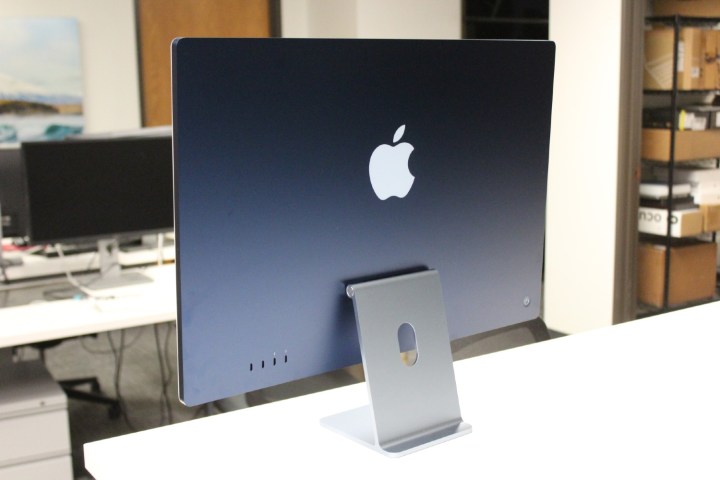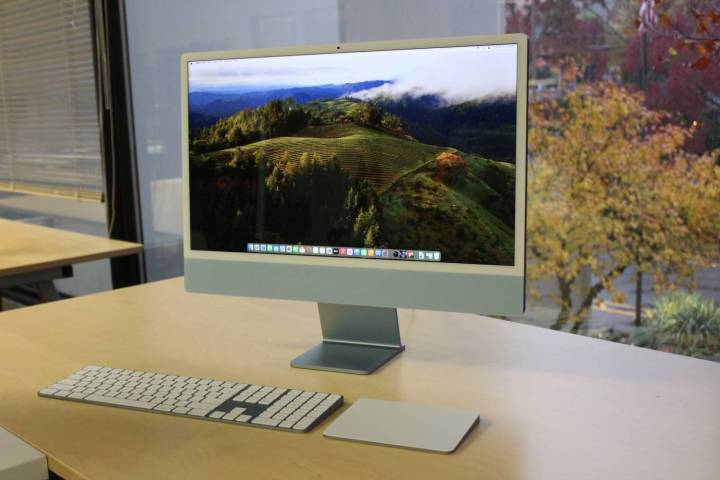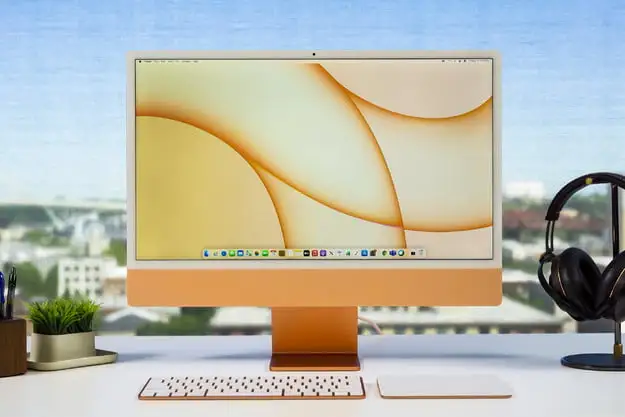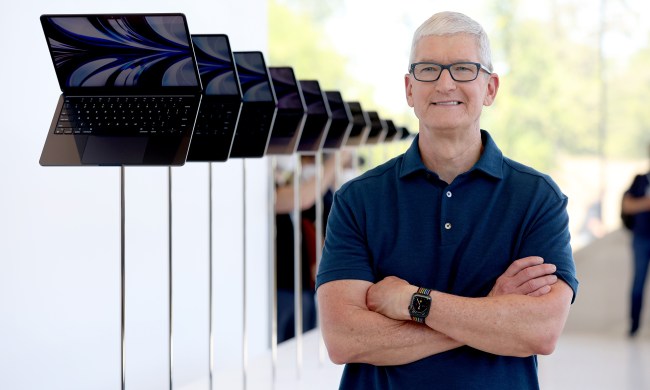
The new iMac has arrived, complete with the updated M3 chip on board. Considering Apple now has just a single size of iMac, that should make buying one straightforward.
But as with all tech purchases, the devil’s in the details. So, after having tested the latest iMacs, we’re here to recommend how to determine which to buy and how to configure it.
Two primary options

When you look at Apple’s website, it shows three different iMacs to choose from, but really, there’s only two. There’s the base configuration and the more advanced one. Both come with the M3 chip, importantly, which has the eight-core CPU and 8-core GPU. They use the same screen as well. But from there, some subtle differences separate these models, which means you’ll want to choose carefully.
The biggest limitation of the M3 base model is ports. It comes with two less USB-C ports than the $1,599 model. Being restricted to just two Thunderbolt ports could be a nuisance, requiring the use of a dock. Both configurations can only connect to a single external display, though. You’ll have to pay an extra $30 for the gigabit Ethernet jack, which is built into the power brick. This comes standard in the $1,599 model, but unless you plan to use a hardwired connection, it’s probably not needed.
There’s a difference in bundled accessories too. While both configurations come with the unfortunate Magic Mouse, the cheaper configuration doesn’t come with the Touch ID keyboard. You have to pay an extra $50 to get some biometric security, which is really lame. The Touch ID keyboard is definitely worth getting, as is the Magic Trackpad. Those two accessories will cost you an extra $100, but unless you already have preferred third-party accessories, they’re absolutely worth it.

The other big difference between the two is in the GPU. The cheaper configuration doesn’t allow you to add the two extra GPU cores — so you’re stuck at just eight. Two extra GPU cores will give you a decent boost in graphics and make up the bulk of the $200 price difference between the two configurations. I haven’t tested the eight-core model myself yet, but Apple’s GPU cores tend to scale down fairly evenly. It might not be quite a 20% difference in actual performance, but it’ll be fairly noticeable. Ultimately, this decision is fairly simple: if you don’t intend to ever play games, edit video, or do 3D modeling, you may not see much in terms of gains.
Lastly, if you opt for the base configuration, you’ll have fewer color options to choose from. Blue, Green, Pink, and Silver are the main options, while the $1,599 model lets you choose from Yellow, Orange, and Purple. Before you choose a color, remember that the colors are two-tone. The front is a more saturated pastel color, while the aluminum base and back are a bolder, more vibrant color. So, make sure you like both shades of the color before you buy. The Silver color is certainly the most professional option, which is the safest best.
Storage and memory

The base configuration also limits you in terms of storage. You also can’t upgrade to 2TB of SSD storage, and are instead restricted to 1TB as the max. And remember — none of these specs can be upgraded after the fact, except by using external storage. Since Apple’s prices on extra storage are outrageous ($400 for a terabyte!), make sure to get what you need since there’s no way to upgrade in the future.
Memory is similar. Options for RAM in the iMac only include 8GB, 16GB, and 24GB — and 8GB should really only be reserved for people with the most basic computing needs. If you hope to use the iMac for anything more extensive, I’d recommend at least 16GB of RAM. If you’re choosing between the $200 RAM upgrade or the $200 storage upgrade, remember that storage can be expanded externally, while memory can’t.
What about the M1 iMac?

Apple doesn’t want you to think about the M1 iMac anymore. It isn’t sold, and the M3 is obviously the cream of the crop. But for a lot of people, the M1 iMac is still going to be a worthwhile purchase if you can find it for the right price. The key, though, is the price. Doing a quick look around, I didn’t see the M1 iMac being sold for more than $150 off the original price, which just happens to be the same price as the M3 iMac. Some other retailers are even still selling the M1 model for the full retail price.
Unless you have a super-tight budget, I think most people should just splurge on the M3 iMac at that point. But if we start to see a refurbished M1 iMac drop down below $1,000, for example, that’s where I perk up.
Because if performance isn’t a huge deal for you — if you just want a basic Mac and love the form factor of the all-in-one — the upgrade to the M3 won’t mean much to your day-to-day usage. But remember one thing: While comparing prices, make sure you’re comparing configurations on an apples-to-apples basis. A lot of times, older models are sold with higher-end specs, such as additional memory or storage.

